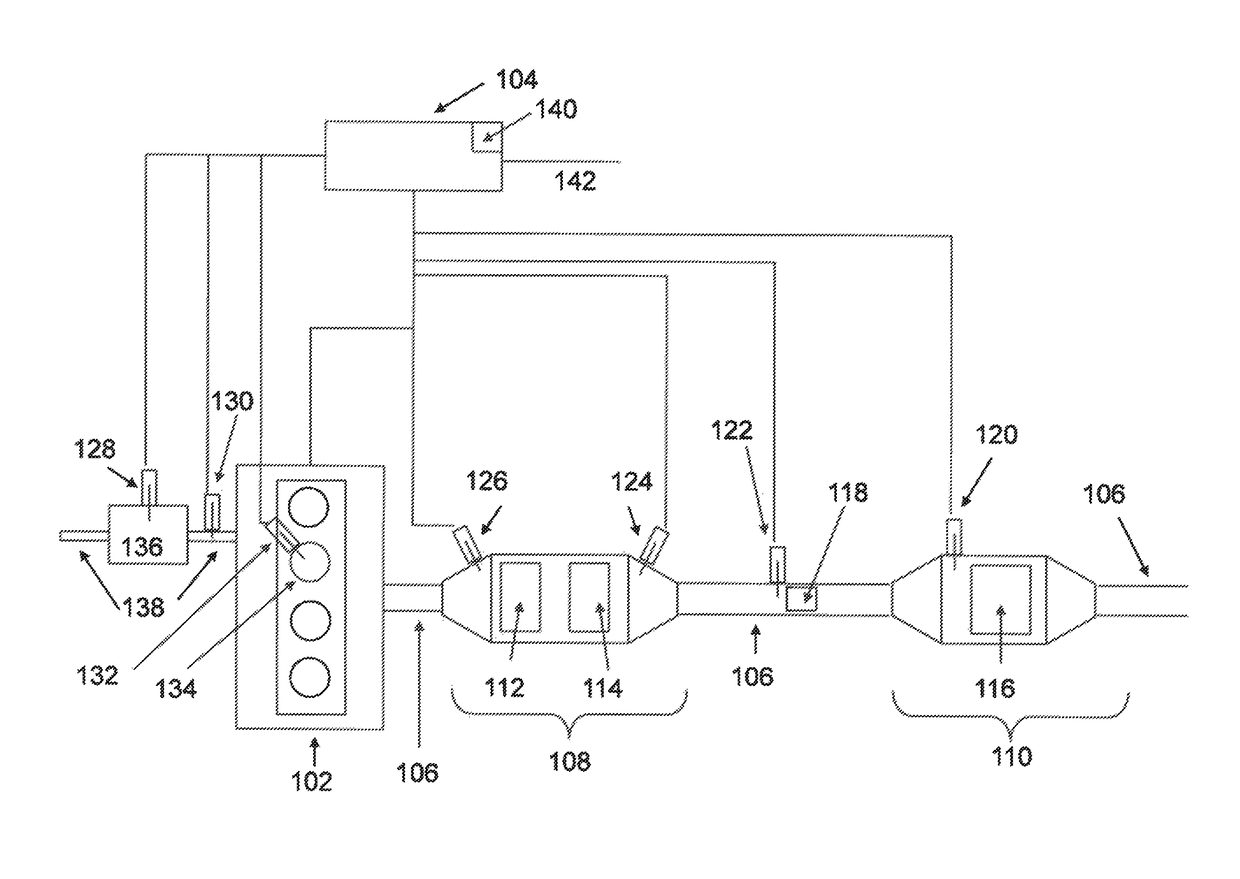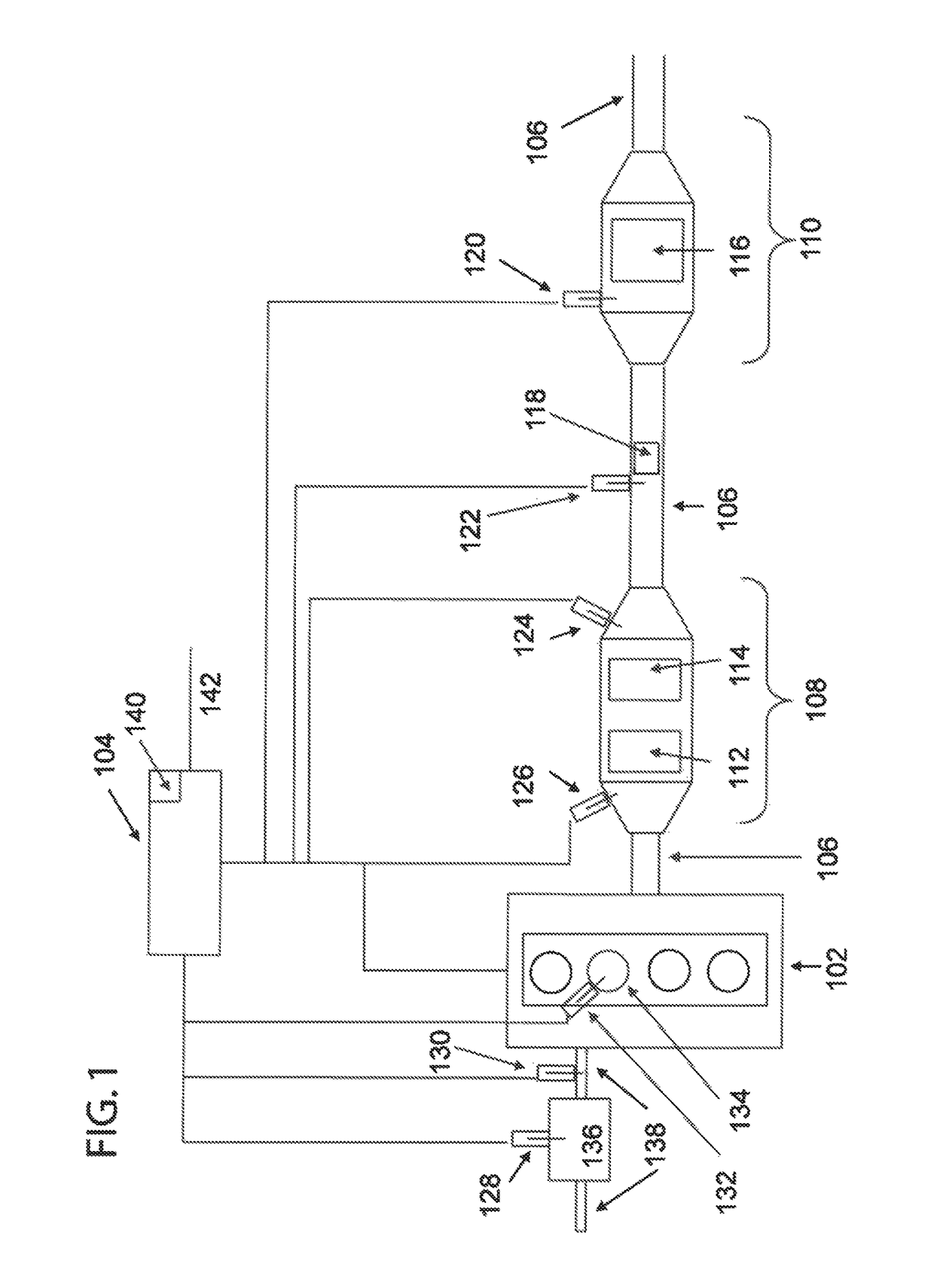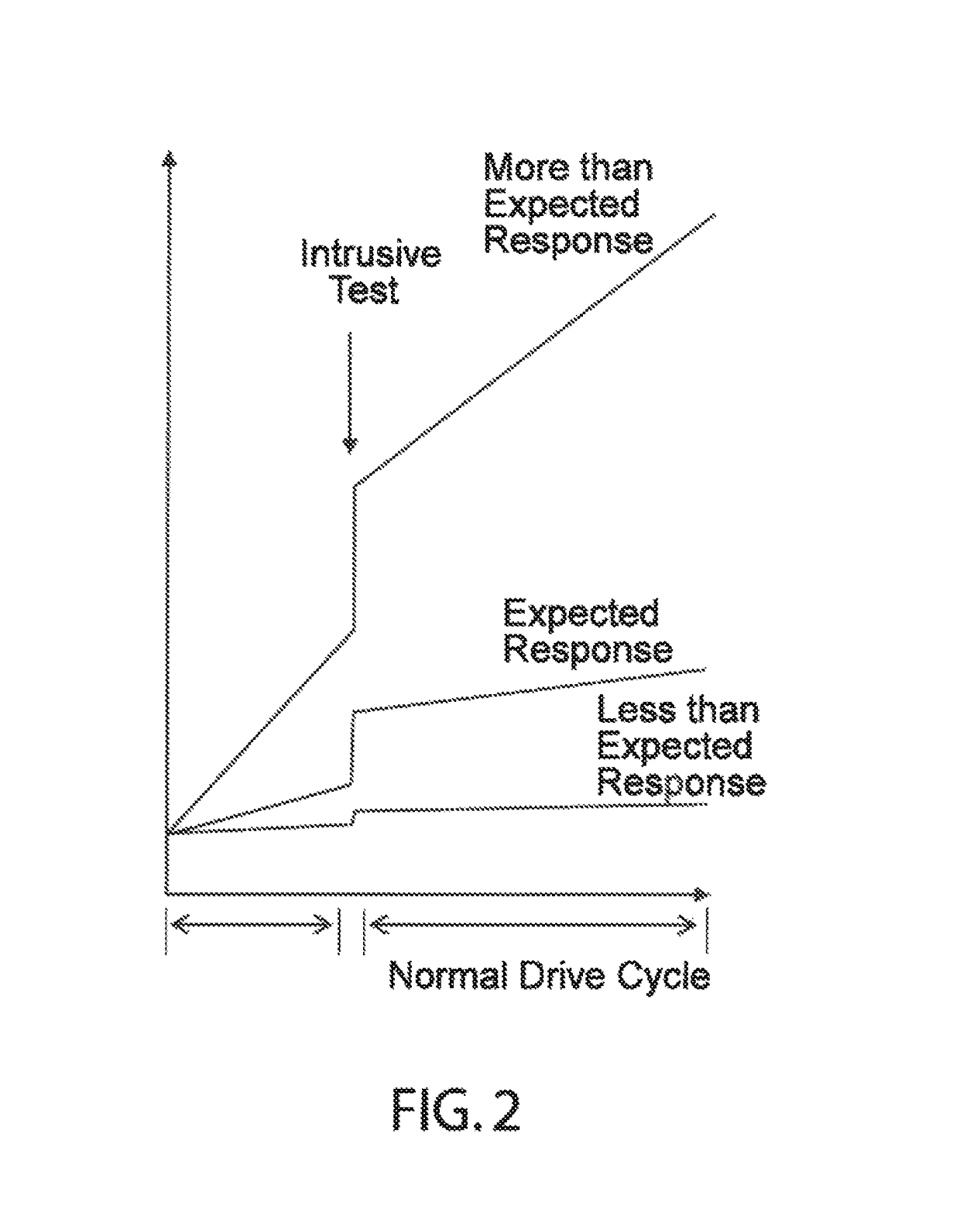By way of background, particulate filter failures are most often caused by malfunctions or failures of other engine or vehicle components upstream of the particulate filter.
Examples of such upstream malfunctions and failures include but are not limited to
injector failures,
turbocharger failures,
coolant leaks, oil leaks, use of incorrect fuels or lubricants, poor engine maintenance, missing or dirty air filters, restricted intake air flow, and the like.
The aforementioned upstream malfunctions may result in excessive
soot or particulate matter (PM) loading of the particulate filter, or water, fuel, oil, or
coolant collecting on the filter, in one example.
Oftentimes, early-
warning signs of these upstream failure
modes may not be detected until the problem has become exacerbated to the point where the exhaust particulate filter itself also fails, or its performance Is severely degraded.
Damage to the particulate filter, which could result in particulate matter escaping or passing through the filter, includes
cracking of the channel walls, loss of one or more channel end-plugs, or melting of the
filter material.
Removal of all or part of the particulate filter from the exhaust system, such as with a straight-
pipe or bypass system, also may result in excess PM emissions.
Pressure sensor and model-based approaches for detecting conditions of abnormal filter or system operation suffer from the following deficiencies: pressure measurements lack the resolution to detect failure conditions resulting in PM escaping from the filter at the mandated on-board diagnostic (OBD) limits.
This deficiency has been well-documented in the
technical literature, and is the reason why the system is not currently used for OBD; the approach provides only an
indirect method of estimating the PM loading level on the filter;
differential pressure sensors directly measure the pressure drop across the filter (not the PM loading level), which is confounded by a large number of parameters such as exhaust flow rate, temperature, ash loading levels,
soot distribution,
filter design, etc.
; the system only functions over a limited range of operating conditions and does not serve as a continuous monitor; pressure-drop measurements are unreliable at low exhaust flow conditions (idle or engine off), during regeneration, during frequent transient operations, and following filter aging once ash has accumulated in the filter; and models (
virtual sensors) rely on a known set of operating conditions to accurately estimate filter loading levels; and the systems by definition, do not function well during error conditions or abnormal operation, such as filter malfunctions or failures, as these conditions are outside the capabilities of the models.
Soot sensors suffer from the following deficiencies:
soot sensors monitor the soot concentration in a portion of the
exhaust gas downstream of the filter and, as a result, the sensors are incapable of monitoring any engine or system malfunctions upstream of the filter and thus incapable of providing advance warning of potential failure conditions; soot sensors do not directly monitor the state of the filter and more specifically only monitor soot in the exhaust downstream of the filter, i.e., the sensor can only provide an indication of a filter failure after the filter has already failed and soot emissions have exceeded the threshold limits; soot sensor accuracy is also affected by exhaust flow velocity, location of the sensing element in the
exhaust pipe (as it only samples a small volume of the flow which may not be representative of the total flow), temperature, particle morphology and composition, and accumulation of deposits (ash, catalyst / washcoat particles) as the sensor ages; accumulation type soot sensors do not provide a continuous monitor but rather cycle from a measuring state to a regeneration state and the regeneration state generally requires additional energy input to burn off any accumulated soot on the sensing element; accumulation type soot sensors do not directly monitor the soot
particle number or
mass in the exhaust
stream, but rather the time for sufficient soot to accumulate on the sensing element, thereby providing only an indirect indication of soot levels in the exhaust; soot sensors suffers from poor durability, the accumulation of contaminants (such as ash), as well as
thermal shock (water in the exhaust), which limits the sensor life as well as the sensor accuracy over its useful life; and in order to further improve measurement accuracy, many OBD approaches utilizing soot sensors still require predictive models to estimate engine-out soot levels for comparison with the downstream soot sensor measurements.
 Login to View More
Login to View More 


